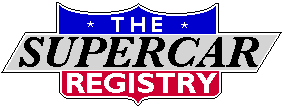

Dedicated to the Promotion and Preservation of American Muscle Cars, Dealer built Supercars and COPO cars. |
|
|
|
#1
|
||||
|
||||
|
The body # in 69 was the Central Office order confirmation
#. This # was sent to the dealer as confirmation of the order. It's also on BBC and window sticker.
__________________
Steve Shauger The Supercar Registry www.yenko.net Vintage Certification™ , Providing Recognition to Unrestored Muscle Cars. Website: www.vintagecertification.com |
|
#2
|
||||
|
||||
|
<div class="ubbcode-block"><div class="ubbcode-header">Originally Posted By: rsinor</div><div class="ubbcode-body">Guys you should not consider the number following the plant location a sequential body number, it is a central office sequencing number or possibly a order receipt number might be a better term. The number identified the car build even before the VIN was assigned. Because of material shortages or constraints the numbers are not sequential with the vin, they were released according to availability of material and build positioning they are not sequential and can very by a significant amount. </div></div>
<div class="ubbcode-block"><div class="ubbcode-header">Originally Posted By: paceme</div><div class="ubbcode-body">The body # in 69 was the Central Office order confirmation #. This # was sent to the dealer as confirmation of the order. It's also on BBC and window sticker. </div></div> Thank you; noted. For comparison's sake: mid 60's Pontiacs were not that way (hence my confusion). In the Pontiac plant(s) the body number was an actual build sequence number. The numbers were sequential through the body shop but then shuffled out of the body bank based on material availability and/or workload leveling before dropping into general assembly. Thanks again for the clarification. K
__________________
'63 LeMans Convertible '63 Grand Prix '65 GTO - original, unrestored, Dad was original owner, 5000 mile Royal Pontiac factory racer '74 Chevelle - original owner, 9.56 @ 139 mph best |
|
#3
|
|||
|
|||
|
Not all Chevy's and all plants are that way either even in 69, some plants used the number in that location some did not.
__________________
Roy Sinor ENJOY LIFE NOW........IT DOES HAVE AN EXPIRATION DATE, SO...... LIVE WELL, LOVE MUCH, LAUGH OFTEN Sinor Prestige Automobiles Inc. 9575 N 177th E. Ave. Owasso, OK 74055 918-361-6424 cell [email protected] www.sinorprestigeauto.com |
|
#4
|
||||
|
||||
|
<div class="ubbcode-block"><div class="ubbcode-header">Originally Posted By: paceme</div><div class="ubbcode-body">The body # in 69 was the Central Office order confirmation
#. This # was sent to the dealer as confirmation of the order. It's also on BBC and window sticker. </div></div> It's crazy to me when one notes the number of "numbers" that are used to usher a vehicle through the build process. Seems like they could have streamlined this a bit. The dealer order number drops into the final assembly location and creates a PVI (Primary Vehicle Identifier) or CSN (Carrier Sequence Number). One of these is used until the vehicle drops into general assembly (or Trim, for non Fisher Body plants) where the GA sequence number (or manifest sequence number) becomes paramount. The GA sequence number then is associated with the VIN and, for engineering vehicles, the engineering vehicle number (ie, "CP5085", for example). This "central office order confimation" number that I have just learned about could be added to that list. It is interesting to note that relative to all those numbers the VIN is the one that is never referred to during the build process. It is of secondary interest, like installing a tune up label or Mulroney window sticker. K
__________________
'63 LeMans Convertible '63 Grand Prix '65 GTO - original, unrestored, Dad was original owner, 5000 mile Royal Pontiac factory racer '74 Chevelle - original owner, 9.56 @ 139 mph best |
|
#5
|
|||
|
|||
|
Roy,
We do see sequential body/order numbers for grouped dealer orders such as the 1969 Copo Camaros. Dealers such as Yenko, Berger and numerous other dealers had sequential body numbers within each of their order groups. Copo Camaro orders shipped to Canada were also assigned sequential body number groups, not necessarily dealer related. The body number sequencing in relation to vin number/build order reversed during the 1969 production of Yenko Camaros. The earliest Yenko order of 50 cars ordered in Oct. 68 and built in Jan '69 were built/vin assigned randomly by highest body number first/lowest vin of the group. By late February Yenko production this sequencing was reversed and continued through the further Yenko orders, low body number low vin first and each increasing throughout the order group. Mark |
 |
| Thread Tools | |
| Display Modes | |
|
|